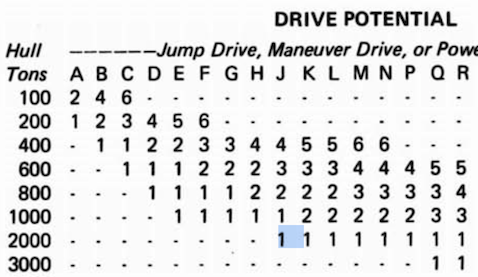Or are you still maintaining that a power plant V in a 600 Dt hull produces 40 EP, i.e. has a potential of 6⅔
Why are you asking a deliberately knowing
Catch-22 question that you
actually don't want the honest answer to?
And even if I did give you an honest answer to the question, you would
Catch-22 deny the legitimacy of any answer I gave you and the processes used to achieve it (like you've done repeatedly and continue to do so).
And here's the thing: it's a three-decade-old set of rules that's been superceded a few times and is now under different ownership -- the window for getting formal acknowledgement of errata is pretty much closed.
Meaning ... that even if additional errors are found (now), RAW Fundamentalists will deny that the errors are actually errors ... because
Thou Shalt Not Find Faults In
The Most Holy RAW ... especially if those faults, flaws and errors were there "all along, from the beginning" and are only NOW being recognized, pointed out and explained for peer review.
What I've said is that RAW has an error in it.
It may be an opinion, but it's also provable.
I've provided the proof ... three times over.
You've just simply denied any proof of error can exist as both impossible and totally unacceptable under any circumstances.
It's a bit like looking in a textbook with a misprint in it.
The misprint is ... 2+2=5
Decades later, someone comes along and says, "That's wrong, because 2+2=4. The textbook has an error in it."
And the Textbook Fundamentalists rise up and reject the argument, because for THEM ... 2+2=5 ... because that's what they were taught (by the book) and therefore it's what they've (always) believed, because the book "said so" ... and it is what they will continue to believe until they die.
It's provably wrong (just do the math), but to the Textbook Fundamentalists
that proof doesn't matter ... and even worse, will NEVER be accepted as legitimate under
ANY circumstances, whatsoever.
All that matters is what is written/printed in THE BOOK ... even if
(and especially if) the book is provably wrong.
Never mind that there are OTHER documented and acknowledged errors in THE BOOK ...
THIS bit CANNOT be in error too!

And so you wind up with people who will swear, up and down, that 2+2=5 ... because of RAW Fundamentalism.
"A closed mind is a terrible thing to celebrate."

And yet ... people do ...

Even worse, they think they're being "virtuous" in keeping their minds closed ... and they cannot (and will not!) be convinced otherwise.

were LBB2 phases not consecutive (a ship destroyed in one phase did not get to fire in a later phase) while LBB5 phases abstracted to concurrent (a ship could both be destroyed and fire in the same combat turn).
It was basically a matter of "fairness doctrine" in gameplay.
In LBB2, the paradigm was that the side with initiative could "go first" and potentially achieve a first strike advantage (crippling the adversary before they could adequately respond). It was somewhat akin to the WWI aerial duel idea of "attacking out of the sun" such that whoever fired first usually had a significant advantage ... and with the element of surprise could potentially "win with the first shots" rather than devolving into a dogfight/melee scrap.
So in LBB2, it was a "take turns" (me/you) but one side "did all their things" before the other side could "get their go" which created something of an asymmetry of advantage for whoever won initiative and got to be the attacker.
LBB5 worked on more of an "even playing field" where exchanges of fire were concurrent (or parallel, if you prefer) rather than sequential, in terms of process. Both sides got their opportunities to shoot ... and the damage results of all of that shooting were held in abeyance until all participants had been given an opportunity to shoot (and THEN the damage took effect for both sides at the same time). As a result, the "first strike advantage" of winning initiative was effectively dropped from the combat paradigm in order to equalize the chances to win for both sides of an exchange.
My surmise is that this was done largely for Fleet On Fleet reasons, in order to give "both sides an equal chance" in an exchange of fire. In a
Trillion Credit Squadron type of context, building an enormous fleet and bringing it to the gaming table ... only to have it half destroyed before you can do anything with it
because you lost the roll for initiative wouldn't feel very satisfying to (most) competitive gamers. You "did everything right, but were betrayed by a single dice roll" is not a very satisfying gameplay experience ... and is actually very likely to turn people off from the game (they leave and never come back).
The downside is that the "first attacker advantage" is something that is KNOWN and widely sought after in many fields of REAL combat (element of surprise, ambush, etc.) ... but it doesn't "feel fair" to gamers who want to have "equal opportunities to win" structured in ways that victory is decided by Player Choices rather than by dice rolls (or worse, a SINGLE dice roll for initiative). When a SINGLE dice roll is the first decisive step on a cascade to failure, rout and ruin ... that
Feels Bad Man™. It may be REALISTIC ... but it doesn't "feel good" to be on the receiving end of it as a gamer.

